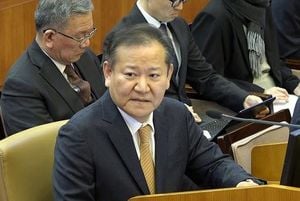Nvidia is set to launch a modified version of its H20 artificial intelligence chip for the Chinese market within the next two months, aiming to navigate around new American export restrictions that have blocked the original model from entering the market. According to three independent sources cited by Reuters, the American chip manufacturer has already informed key Chinese clients, including major cloud service providers, of its plans to roll out the revised H20 version by July 2025.
This move marks Nvidia's latest effort to maintain its foothold in one of its most significant markets as Washington continues to tighten restrictions on China's access to advanced semiconductor technology. The original H20 chip, which was Nvidia's most powerful AI chip approved for sale in China, was effectively barred from the market when U.S. authorities informed the company that it would now require a special export license.
To comply with the new U.S. guidelines, Nvidia has reportedly redesigned the technical specifications of the H20. The new chip will have notably reduced capabilities compared to its predecessor. One source noted that the revised version will feature "significantly reduced memory," while another indicated that customers might be able to modify the module's configuration to tailor performance to their needs.
China's importance to Nvidia cannot be overstated. The country accounted for approximately $17 billion in revenue for Nvidia in the fiscal year ending January 26, 2025, which is about 13% of the company’s total revenue. The strategic significance of this market was underscored by a recent visit from Nvidia CEO Jensen Huang to Beijing, shortly after the announcement of the new export controls. During meetings with Chinese officials, Huang emphasized the critical role the Chinese market plays in Nvidia's future, especially as the U.S. government continues to impose stringent measures, citing concerns over potential military applications of advanced chips.
The H20 chip was initially scheduled for release in October 2023. Following the tightening of export controls, major technology companies such as Tencent, Alibaba, and ByteDance—parent company of TikTok—have significantly increased their orders for the H20, reflecting strong demand for more affordable AI models within China. By April 2025, Nvidia had reportedly secured orders worth $18 billion for the H20 chip.
In a separate development, China's exports saw an unexpected rise in April 2025, despite the ongoing imposition of high American tariffs. The Chinese customs authority reported an 8.1% year-on-year increase in exports in dollar terms, far exceeding the 1.9% growth anticipated in a Reuters poll. Meanwhile, imports fell by 0.2% in April compared to the previous year, contrary to economists' expectations of a 5.9% decline.
Exports to the United States specifically dropped by over 21% in April, while imports from the U.S. decreased by nearly 14%, according to calculations from CNBC based on official customs data. This decline follows a 9.1% increase in March, as exporters rushed to fulfill orders ahead of impending tariff hikes.
Experts suggest that the overall rise in exports may be attributed, in part, to the diversion of products for the American market through third countries, based on contracts signed prior to the announcement of tariffs. Zhiwei Zhang, president and chief economist of Pinpoint Asset Management, noted that he expects trade to gradually decline in the coming months.
During April, Chinese exports to the Association of Southeast Asian Nations (ASEAN) surged by 20.8% year-on-year, following an 11.6% increase in March. While Vietnam and Malaysia remained the primary destinations for Chinese exports to the region, Indonesia and Thailand experienced increases of 37% and 28%, respectively.
Simultaneously, exports to the European Union rose by 8.3%, though imports fell by 16.5% year-on-year. In March, exports had increased by 10.3%, while imports had decreased by 7.5%. The U.S. President Donald Trump has imposed tariffs of 145% on imports from China, prompting retaliatory tariffs of 125% on American imports from China.
Despite both sides attempting to mitigate the economic impact of these high tariffs by granting exceptions for certain critical products, the volume of container ships traveling from China to the U.S. had dramatically decreased by late April, according to Raymond Yeung, chief economist for Greater China at ANZ Bank.
In response to the economic challenges posed by the tariffs, Chinese authorities have intensified efforts to support the economy in recent weeks, implementing measures to ease monetary policy and bolster businesses affected by the tariffs. However, China’s industrial activity fell to a 16-month low in April, with the index for new export orders dropping to its lowest level since December 2022, signaling potential declines in exports in the upcoming months.
Overall, while Nvidia seeks to adapt its technology to comply with new regulations and maintain its market presence in China, the country’s broader export landscape presents a complex picture, characterized by resilience amid external pressures and shifting trade dynamics.




